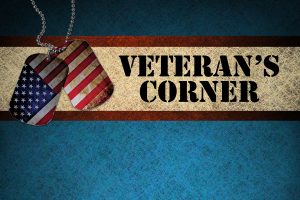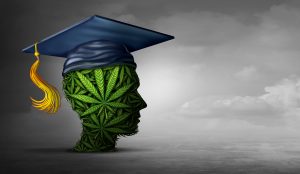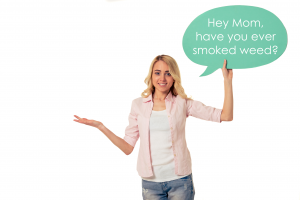Post Traumatic Stress Disorder affects many different types of people. While many often associate PTSD with veterans, this disorder has no prejudice.
“PTSD is a hidden epidemic, afflicting more than 7 percent of the U.S. population and some 8 million adults every year. PTSD can develop in people who have experienced, witnessed, or is close to someone who has experienced an intense shock, scare, or traumatic event. A veteran can develop PTSD from various experiences of being at war or in the military.”
“A civilian can develop PTSD after being personally sexually assaulted or indirectly by watching a person get hit by a vehicle. Its victims typically become emotionally numb, lose interest in the things they used to enjoy, and may easily become frightened. While combat is a strong risk factor-an estimated 30 percent of Vietnam War veterans and 11 to 20 percent of soldiers from the wars in Iraq and Afghanistan have suffered PTSD-the majority of cases spring from threats that are, tragically, closer to home.” (Harvard Public Health)
Regardless of age, gender, race, background, PTSD has the potential to affect us all.
Often people have the effects of PTSD but are not aware that is what they are actually experiencing. Due to the social stigmas that can be attached to conditions such as PTSD, anxiety, and stress patients can go without naming their condition, but perhaps pass off their repetitive migraines as just that, migraines. It is only once we look deeper into our past history and accurately assess our mental state, do we see that past trauma can play a significant role in our present state. The famous quote by writer and philosopher, George Santayana, “Those who do not learn history are doomed to repeat it” is an insightful example of how past events, if not properly addressed, are guaranteed to cause problems in the future.
Treatment of PTSD
When anxiety disorders are left untreated or under-treated, several areas of the brain like the hippocampus (which regulates emotion) and the prefrontal cortex (decision making, planning abilities) will shrink, causing long-term damage. During flashbacks the thalamus (sensory signals) actually shuts down, giving isolated sensory imprints usually accompanied by terror and feelings of helplessness.
The stark reality is that the “standard of care” treatment for stress and anxiety often falls short. When these traditional therapies alone disappoint, patients need natural alternatives for their brain and body to function fully and experience a level of calmness.
The typical care is behavioral therapy, counseling, and anti-anxiety/pain medications. The problem is therapy is often just not enough due to the human brain’s complexities. Medications can be addictive and very often fail to be more beneficial than hurtful.
Perhaps cannabis cannot fully solve every stress in one’s life, or completely change what has happened in their past life, but it can help to treat their severe depression, anxiety, aggression, sleep quality, nightmares, and more.
Veterans and PTSD
Although research has been slow to surface, there have been studies on veterans with PTSD and how cannabis can help to alleviate their suffering. In January 2017, the Scottsdale Research Institute in Phoenix, Arizona began the first official study on cannabis and its effects on veterans suffering from PTSD as part of the Multidisciplinary Association for Psychedelic Studies (MAPS).
“The veteran community has a higher rate of prescription drug overdose, and many vets discovered they can substitute cannabis for the more addictive medications they’ve been prescribed, which is how we started to examine this,” said Dr. Sue Sisley, director of the research study.
THC, CBD, and Terpenes
Medical cannabis is mainly made up of THC, CBD, and terpenes. CBD is known to bind to receptors and is thought to regenerate cells and brain function, while THC helps the brain to relax and can alleviate physical pain and symptoms of apprehension. Terpenes, or smells, contain the healthy healing properties that are present in our leafy green vegetables, such as broccoli and brussel sprouts, in herbs such as rosemary, and in citrus fruits like mango or grapefruit. There is an entourage effect of these chemicals when taken together. This effect, or synergy, means the total is greater than the parts. In other words, it’s more beneficial to have a combination of cannabinoids such as THC and CBD as well as terpenes and flavonoids.
Our brain and nerve cells have cannabinoid receptors, so our bodies naturally react to CBD and THC by merging directly with our cells. Our natural endocannabinoid system, which every human has, works synergistically with both CBD and THC, creating a multitude of beneficial reactions in the body, including unique healing abilities.
As further evidence, PTSD suffers have a decreased concentration of endocannabinoids (Nacyl-ethanolamides palmitoylethanolamide [PEA], oleoylethanolamide [OEA] and stearoylethanolamide [SEA]) in hair samples, which is a more consistent survey of our bodies hormone levels than blood samples. Endocannabinoids and their receptors are found throughout the body: in the brain, organs, connective tissues, glands, and immune cells. In each tissue, the cannabinoid system performs different tasks, but the goal is always the same: homeostasis, the maintenance of a stable internal environment despite fluctuations in the external environment.
PTSD, Cannabis, and the Future
Over the past few years, there has been a growing interest in studying veterans with PTSD and the effect of medical cannabis in place of other medications. Findings have been consistent in that individuals with PTSD who were treated with medical cannabis showed significant improvement in global symptoms including: flashbacks, frequency of nightmares, sleep, and general anxiety.
Using small amounts of cannabis throughout the day will nourish your endocannabinoid system and help to promote balance in your body. It is clear that the endocannabinoid system plays a vital role in our overall health and well-being but it is not the only approach. Just like the “entourage effect” or synergy of CBD and THC, I believe a person must invest in there own physical and emotional wellbeing. In addition to CBD:THC a patient can take small steps such as: avoiding chemicals, eating clean healthy foods, maximizing sleep, decreasing stress, creating a daily exercise routine, and strengthening interpersonal connections to friends and loved ones, to treat oneself both emotionally and physically.
PTSD DOs and DON'Ts
DON'T
- Pity them
- Fear or avoid them
- Try and “fix” them
- Judge them
- Assume you know what they are going through
- Think less of them or think they are weak
- Do NOT say:
– “Just get over it”
– “You’re crazy”
– “Just be stronger”
– “It’s all in your head”
– “Pull yourself together”
– “Suck it up”
– “It’s all in the past”
– “Just forget about what happened”
– “Aren’t you over it yet?”
– “What you really need to do is ________”
DO
- Treat them with respect
- Acknowledge the depth and reality of their struggle
- Encourage and support them
- Celebrate the small victories with them
- Try to imagine a day in their shoes
- Accept that you will never fully understand what they are going through
- Invite them to explore resources together
- Respect their need for space
- Offer to go with them to a local veteran organization, VA, doctor, or counselor
- Be supportive
- Pray for them
- Listen to them





